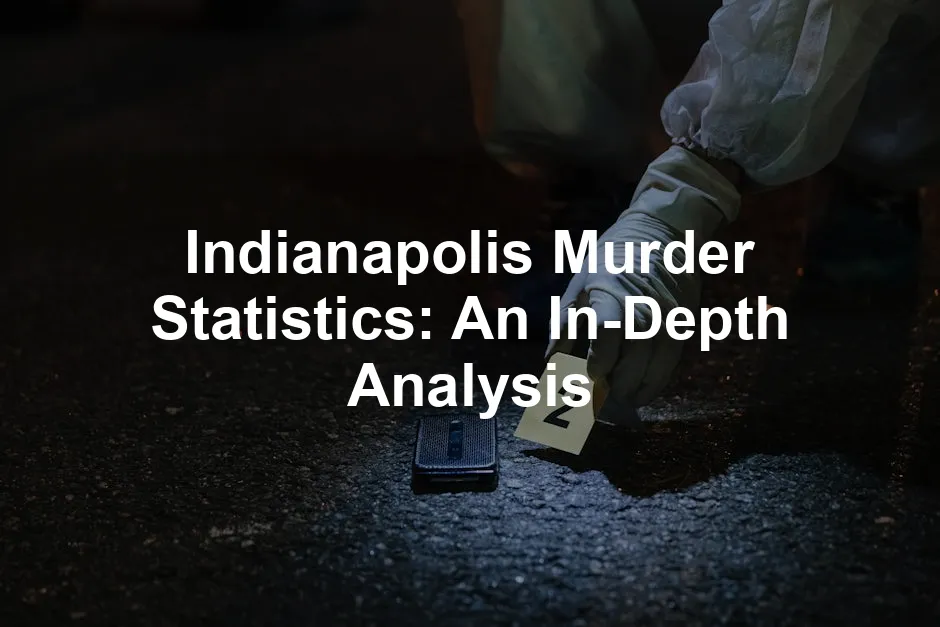Introduction
Indianapolis, the beating heart of Indiana, has faced a tumultuous journey with its murder statistics. The city has recently grappled with alarming homicide rates, peaking notably during the pandemic years. Understanding these numbers is crucial. They tell a story—not just of crime, but of communities affected, policies enacted, and the ongoing battle for safety.
In 2021, Indianapolis hit an all-time high, recording a staggering 272 homicides. This figure raised eyebrows and concerns, prompting city leaders to rethink strategies for community safety. Fast-forward to 2023, and the total number of homicides dropped to 216, signaling a hopeful shift. But what does this decline mean for the residents?
Understanding crime data is paramount for effective public policy. It helps in identifying trends, allocating resources, and fostering community trust. When citizens know the statistics, they can engage more effectively with local officials to advocate for change. Our purpose here is to provide a detailed analysis of murder statistics in Indianapolis, examining trends, historical context, and community responses to violence.
This article isn’t just about numbers; it’s about people, neighborhoods, and the collective effort required to combat violence. By analyzing these statistics, we aim to illuminate paths forward for Indianapolis, highlighting the importance of community involvement and informed policymaking.
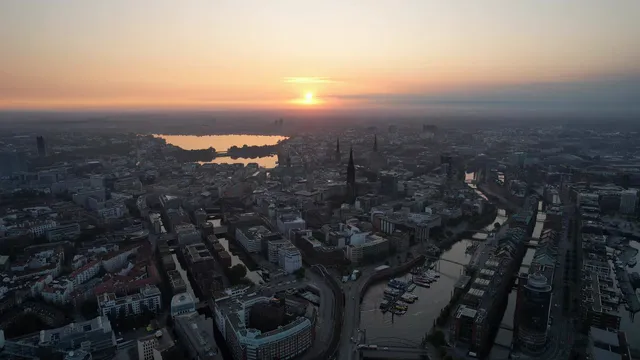
Historical Context of Homicides in Indianapolis
Overview of Historical Trends
The past decade has seen Indianapolis navigate a rollercoaster of homicide rates. Following a series of fluctuations, 2021 stood out like a sore thumb with 272 homicides. This was a peak that shocked the community and sparked discussions about safety and prevention.
In contrast, 2022 brought a slight relief, showcasing a decline to 226 homicides. By the end of 2023, the numbers further decreased to 216. This trend is encouraging, especially when compared to the alarming statistics of previous years.
As we step into 2024, the data suggests an ongoing decline. By mid-year, Indianapolis had recorded 103 homicides, down from 114 by the same point in 2023. This decline indicates potential shifts in community safety measures and engagement with law enforcement. It’s essential to recognize that while the numbers have reduced, the journey towards safety remains ongoing.
If you want to dive deeper into the psychology behind crime and understand the factors that lead individuals down a dark path, consider picking up a copy of The Psychology of Criminal Behavior. This textbook provides an insightful look into the minds of offenders and the societal influences that shape their actions.

The Impact of External Factors
Homicide rates in Indianapolis are influenced by a myriad of factors. Socioeconomic conditions, education access, and community resources play significant roles. Areas with higher poverty rates often see a corresponding spike in violent crime.
The COVID-19 pandemic acted as a double-edged sword. While it led to increased isolation, economic strain, and mental health challenges, it also prompted communities to rally together in unprecedented ways. The pandemic’s aftermath saw a rise in grassroots initiatives aimed at reducing violence, emphasizing the power of community action.
Additionally, trends such as youth involvement in crime and the prevalence of firearms have emerged as significant contributors to homicide rates. By understanding these external factors, Indianapolis can tailor its strategies to address the root causes of violence rather than merely responding to its symptoms.
As the city moves toward 2024, it’s clear that public safety is a shared responsibility. By engaging the community and addressing underlying issues, Indianapolis can continue to work toward a safer environment for all its residents.
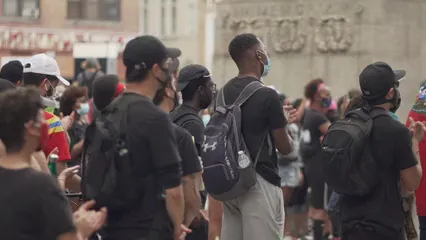
Current Murder Statistics
2023 and 2024 Homicide Data
In the year 2023, Indianapolis recorded a total of 216 homicides. That’s a notable drop from the 226 homicides reported in 2022. Among these, at least 170 were classified as criminal homicides, which is an important distinction. The year 2023 marked a nearly 19% decrease in criminal homicides compared to the previous year, showcasing a hopeful trend towards improved community safety.
Now, as we step into 2024, the numbers continue to reveal interesting patterns. By mid-year, the city had already recorded 103 homicides. This is lower than the 114 homicides reported at the same time in 2023. While the numbers suggest a decline, we still find ourselves on a path where exceeding 200 homicides for the fifth consecutive year is a possibility.
Speaking of understanding human behavior, if you’re interested in how our minds work and the decisions we make, check out Thinking, Fast and Slow by Daniel Kahneman. This book explores the dual systems of thought and how they affect our decisions.
The overall context is crucial. Even with a decrease, the landscape of violent crime remains complex. The recent figures indicate that Indianapolis is making strides, but the ongoing challenges cannot be ignored. Each statistic reflects a life lost, reminding us of the urgency for community involvement and effective law enforcement strategies.

Breakdown of Homicides
Types of Homicides
Understanding the types of homicides helps paint a clearer picture of the violence affecting Indianapolis. Homicides fall into several categories, including criminal, accidental, and self-defense. In 2023, there were 171 criminal homicides, a commendable decrease from 211 in 2022. However, noncriminal homicides increased significantly, from 15 incidents in 2022 to 45 in 2023. This uptick raises questions about the underlying factors driving these changes.
Unsolved cases remain a pressing concern. In 2023, the Indianapolis Metropolitan Police Department (IMPD) achieved a clearance rate of 36%, meaning they solved about one-third of homicide cases. This is a step up from previous years, where clearance rates hovered around 50%. Improved community cooperation and enhanced investigative capabilities played significant roles in this progress.
Demographics and Locations
Examining the demographics of homicide victims sheds light on the communities most affected by violence. The data indicates a troubling trend among younger individuals, with a noticeable spike in youth homicides. In 2023, there were 25 cases involving victims under 18. This highlights the urgent need for targeted interventions aimed at youth.
When it comes to location, certain neighborhoods bear the brunt of gun violence. The top five deadliest zip codes for gun violence in Indianapolis serve as a grim reminder of the work that lies ahead. Efforts to improve safety must focus on these areas, where community engagement is crucial.
By analyzing the demographics and locations of homicides, we can better understand the challenges faced by Indianapolis. The statistics are more than just numbers; they represent lives, families, and communities impacted by violence. Addressing these trends requires a concerted effort from law enforcement, community organizations, and residents alike.

In conclusion, the current murder statistics present a mixed bag of progress and ongoing challenges. While the decline in certain categories is encouraging, the persistently high number of homicides reminds us of the work that remains. Community involvement, innovative policing strategies, and a focus on prevention are essential as Indianapolis strives for a safer future.
Community Response and Initiatives
Police and Governmental Efforts
The Indianapolis Metropolitan Police Department (IMPD) is not sitting idly by, twiddling its thumbs while homicide rates fluctuate. Instead, they’ve rolled up their sleeves and launched a multi-faceted approach to tackle this pressing issue. The IMPD has ramped up community engagement initiatives, aiming to foster trust and cooperation between law enforcement and residents.
One of the significant steps taken is the appointment of a Chief Violence Prevention Officer, Ralph Durrett Jr. This role is pivotal, particularly focusing on youth gun violence. The strategy includes proactive measures to tackle the root causes of violence, such as poverty and lack of opportunities.
Furthermore, IMPD has enhanced its homicide unit, increasing the number of detectives. This ensures that cases aren’t just numbers on a report but represent lives that deserve justice. The department has also invested in technology, such as public safety cameras and license plate readers, helping them solve crimes more efficiently.
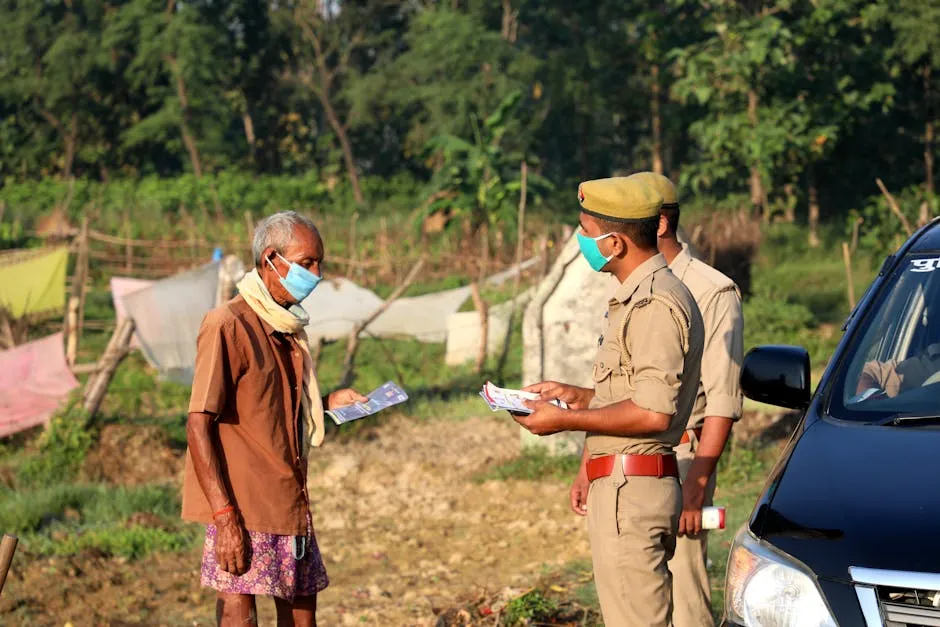
If you’re curious about the legalities surrounding crime, consider checking out Criminal Law: A Desk Reference. This book offers essential insights into the legal frameworks that govern crime and justice.
Community meetings and outreach programs are essential parts of their strategy. These forums allow residents to voice concerns and work together with police to create safer neighborhoods. An informed community can significantly impact crime rates, as local insights often lead to actionable intelligence.
Grassroots Movements
Local organizations are stepping up to the plate, championing violence prevention initiatives. Groups like the Indianapolis Ten Point Coalition and the Peace Learning Center are at the forefront of these efforts, working tirelessly to create a safer environment for everyone.
These grassroots movements focus on youth engagement, providing mentorship and educational programs that aim to steer young people away from violence. For instance, the Peace Learning Center offers programs that teach conflict resolution and promote empathy—skills that are invaluable in preventing violence.
Community-led initiatives are crucial in addressing youth gun violence. One notable example is the “Stop the Violence” campaign, which encourages young people to become advocates for peace in their neighborhoods. The campaign includes workshops, rallies, and art projects aimed at fostering positive community identities.

The impact of these initiatives is already visible. In 2024, there were three reported youth homicides, a significant drop compared to twelve in 2023. This decline underscores the importance of community efforts and how proactive engagement can lead to tangible change.
Comparative Analysis of Crime Rates
Indianapolis vs. National Averages
When we stack Indianapolis’s murder rates against national averages, the numbers tell a stark story. The city has consistently surpassed the national average of 6.3 homicides per 100,000 residents. In 2023, Indianapolis recorded a murder rate of 23.5 per 100,000 residents, a figure that raises eyebrows and concern.
But hold on! It’s not just a solo act. When we compare Indianapolis to other cities of similar size, it becomes clear that the crime landscape is quite complex. Many cities over 500,000 residents experience similar challenges, echoing the need for collaborative efforts in crime reduction.
Violent crime rates in Indianapolis stand at 1,028 per 100,000 residents, which is significantly higher than the national average of 370. This statistic reveals the urgent need for tailored strategies to address violence in urban settings. Property crime, too, remains a pressing issue, with rates at 3,377 per 100,000 residents.

If you’re intrigued by how storytelling and crime intersect, grab a copy of The Devil in the White City by Erik Larson. This gripping narrative intertwines history and crime in a way that will keep you on the edge of your seat.
Understanding these statistics is not just about numbers; it’s about the lives these numbers represent. Every statistic reflects a person, a family, and a community affected by crime. The city’s leaders and residents must work hand in hand to create solutions tailored to these challenges, focusing on the unique needs of Indianapolis.
By focusing on community engagement, innovative policing strategies, and sustained support for grassroots movements, Indianapolis can embrace a safer future. The path ahead might be challenging, but with collective effort, the city can turn the tide on crime.

Crime Trends in Context
Indianapolis is a unique blend of vibrant neighborhoods, each with its own character and charm. However, when it comes to crime rates, this city tells a different tale. Compared to other cities in Indiana, Indianapolis has a reputation that raises eyebrows. Most cities in the state have lower crime rates, with over 99% of communities boasting safer statistics.
Nationally, Indianapolis doesn’t fare much better. With a violent crime rate of 1,028 per 100,000 residents, the city’s crime figures are significantly higher than the national average of 370 per 100,000 residents. In 2023 alone, the city recorded a homicide rate of 23.5 per 100,000, making it one of the top contenders for the most dangerous cities in the U.S.
But not all neighborhoods share the same fate. For example, the serene community of Williams Creek boasts a safer environment, while neighborhoods like 46218 and 46226 sadly carry a heavier burden of violence. These disparities highlight the importance of localized safety measures and community engagement. Residents in safer neighborhoods often feel insulated from the chaos, unaware of the struggles just a few miles away.

If you’re looking for a thought-provoking read on societal issues, consider Just Mercy by Bryan Stevenson. This book sheds light on the flaws in our justice system and emphasizes the importance of mercy and compassion.
Understanding the crime landscape in Indianapolis requires a closer look. Recognizing the stark differences in neighborhood safety can empower communities. It encourages residents to advocate for resources and initiatives tailored to their specific needs. After all, everyone deserves to feel safe in their own backyard, and addressing these disparities is crucial in the fight against crime.

Factors Influencing Homicide Rates
Socioeconomic Factors
The link between socioeconomic status and crime is as clear as day. Areas with high poverty rates often report elevated homicide rates. In Indianapolis, neighborhoods facing economic struggles see more crime. The lack of educational opportunities, high unemployment rates, and insufficient access to community resources create a perfect storm for violence to thrive.
Education plays a pivotal role too. Higher education levels correlate with lower crime rates. In Indianapolis, only about 80.7% of residents have graduated high school, slightly below the national average. This gap highlights the need for educational initiatives that can uplift communities and break the cycle of poverty and violence.
Access to community resources can make a world of difference. When residents have access to mental health services, recreational programs, and job training, they are less likely to resort to violent means. Cities like Indianapolis must invest in these resources to tackle the root causes of crime, fostering a culture of growth and safety.

Policing and Public Safety
Policing strategies significantly impact homicide rates in Indianapolis. Over the years, the Indianapolis Metropolitan Police Department (IMPD) has adopted various approaches to combat rising crime. The department has focused on community collaboration, recognizing that a united front is essential in the fight against violence.
Recent changes in policing, like the appointment of a Chief Violence Prevention Officer, emphasize proactive measures to prevent youth gun violence. This innovative approach aims to address the underlying issues contributing to crime, rather than merely responding to incidents after they occur.
Public perception of safety is also influenced by current events and policies. When crime rates soar, fear often follows, creating a ripple effect in community trust. However, as statistics show a decline in overall violent crime, public sentiment can shift positively, encouraging community engagement.
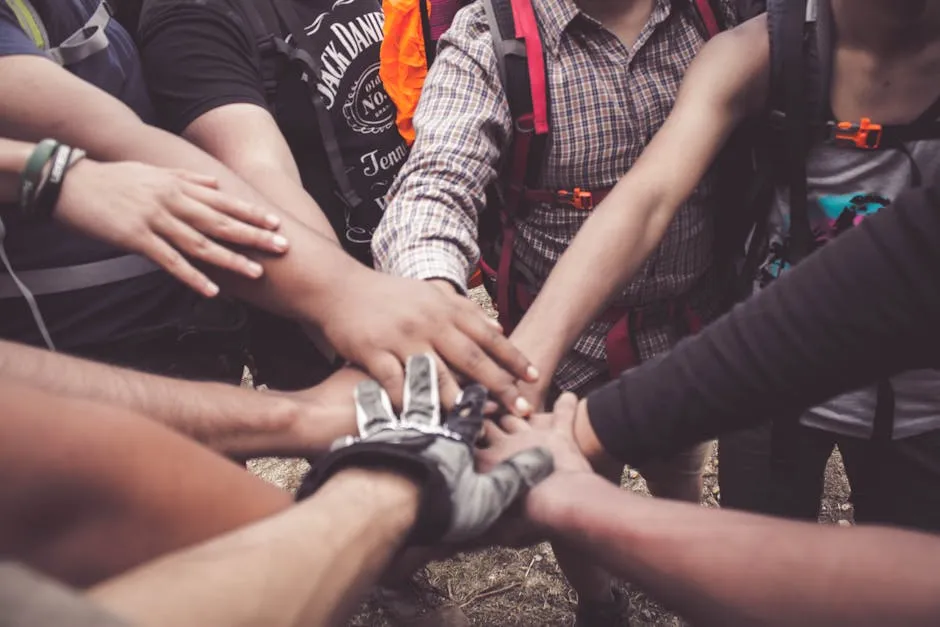
If you’re interested in understanding the complexities of criminal behavior, you might find Mindhunter by John E. Douglas to be a compelling read. It delves into the psychological profiles of serial killers and the FBI’s efforts to understand their motives.
Transparency is crucial. When the IMPD shares data and insights with the public, it fosters trust and encourages residents to participate in safety initiatives. The more informed the community, the more empowered they are to contribute to solutions.
In summary, a multifaceted approach is essential to addressing homicide rates in Indianapolis. By improving socioeconomic conditions, enhancing policing strategies, and building community trust, the city can pave the way for a safer future for all its residents.
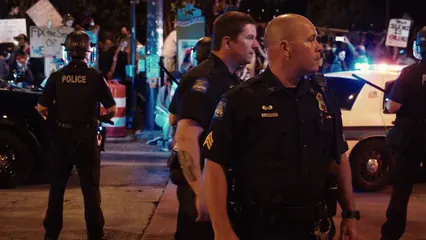
Conclusion
Indianapolis has faced a challenging few years in terms of homicide rates, but recent statistics offer a glimmer of hope. In 2023, the city recorded 216 homicides, a significant drop from the previous year’s 226. This marks the second consecutive year of decline, which is encouraging after the alarming peak of 272 homicides in 2021. The first half of 2024 has continued this trend, with 103 homicides reported by July, suggesting a further decrease compared to 114 during the same period in 2023.
Understanding these statistics is vital. They not only reflect the safety of neighborhoods but also the resilience of the community. The data reveals that while the numbers are decreasing, there are still pressing issues, such as the increase in noncriminal homicides and the troubling rise in youth violence. Addressing these challenges requires a concerted effort from both law enforcement and community members.
Community involvement is crucial in combating crime effectively. When residents engage with local initiatives, they contribute to a safer environment. Programs aimed at youth mentorship, conflict resolution, and neighborhood watch can foster a sense of unity and commitment to safety. Furthermore, encouraging open lines of communication between the police and the community helps build trust and enhances cooperation.
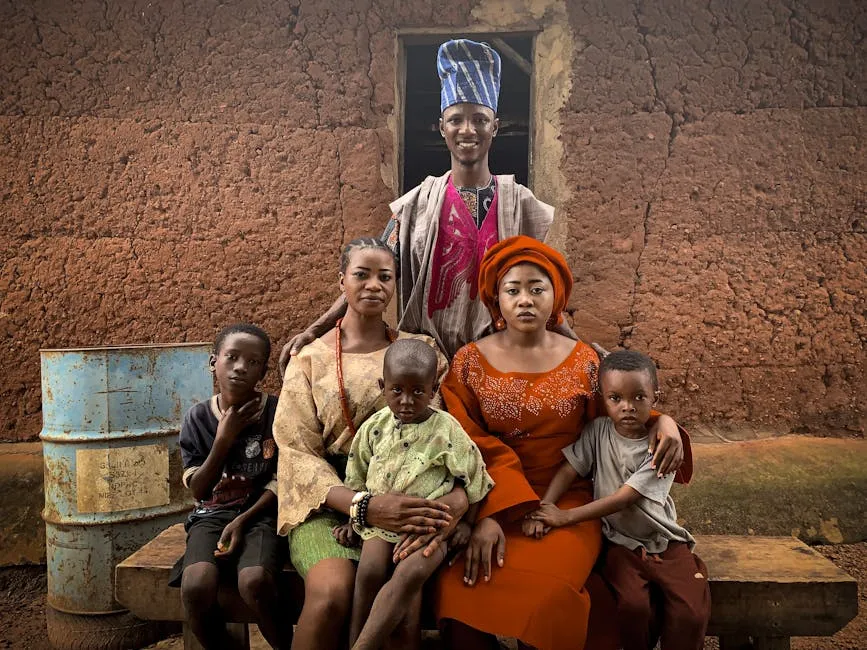
If you’re looking for a transformative read that explores personal growth and resilience, check out Man’s Search for Meaning by Viktor E. Frankl. This powerful book offers insights into finding purpose even in the most challenging circumstances.
Analyzing crime data is not merely an academic exercise; it informs strategies for prevention and intervention. By understanding trends and demographics, Indianapolis can implement targeted programs that address the root causes of violence. The city’s leaders must prioritize these initiatives to ensure that gains in public safety are sustained.
As we move forward, it’s essential for every resident to take an active role in local safety initiatives. Whether it’s attending community meetings, volunteering for youth programs, or simply keeping an eye out for suspicious activity, every action counts. Together, we can create a brighter, safer future for Indianapolis.
FAQs
What is the current homicide rate in Indianapolis?
As of mid-2024, Indianapolis has reported 103 homicides, down from 114 at the same time in 2023. The homicide rate is currently about 23.5 per 100,000 residents, significantly higher than the national average.
How does Indianapolis compare to other cities regarding crime rates?
When compared to cities of similar size, Indianapolis has one of the highest crime rates in the country. With a violent crime rate of 1,028 per 100,000 residents, it far exceeds the national average of 370. Over 99% of communities in Indiana boast lower crime rates than Indianapolis.
What initiatives are in place to reduce homicides in Indianapolis?
Numerous initiatives are in place, including the recent appointment of a Chief Violence Prevention Officer, Ralph Durrett Jr. The IMPD has also enhanced community engagement efforts and increased the number of detectives in its homicide unit, improving the clearance rate for cases.
What demographics are most affected by homicide in Indianapolis?
Homicides in Indianapolis disproportionately affect younger individuals, with a spike in cases involving victims under 18. Additionally, certain neighborhoods, particularly those with higher poverty rates, experience significantly more violence than others.
How can residents contribute to reducing violence in their communities?
Residents can engage in local safety initiatives by attending community meetings, participating in neighborhood watch programs, and volunteering with organizations focused on youth mentorship and violence prevention. Every action, no matter how small, can help create a safer community.
Please let us know what you think about our content by leaving a comment down below!
Thank you for reading till here 🙂
For more information on the comprehensive analysis of Indianapolis Indians statistics, check out this article Indianapolis Indians Statistics.
To understand the significance of community efforts in addressing violence, refer to this guide on Family Violence Prevention and Services Act.
All images from Pexels

